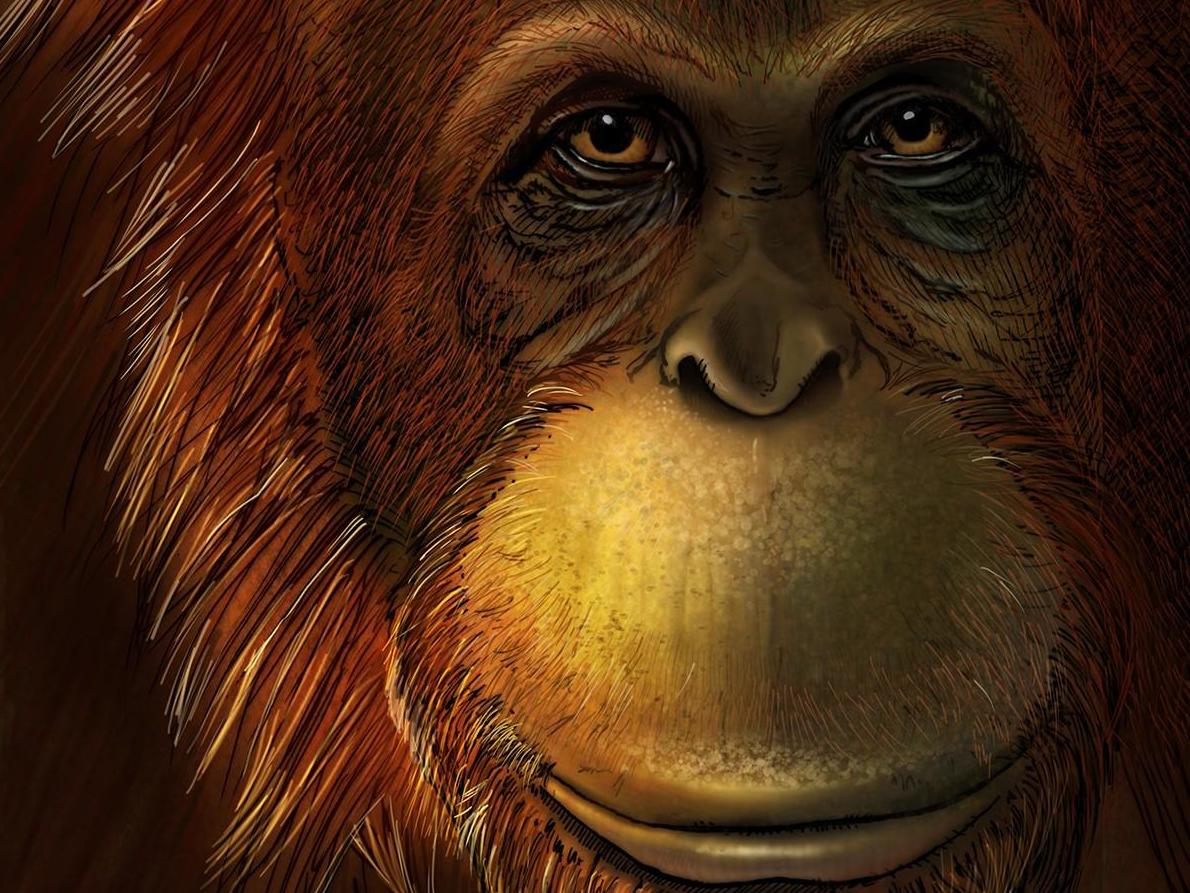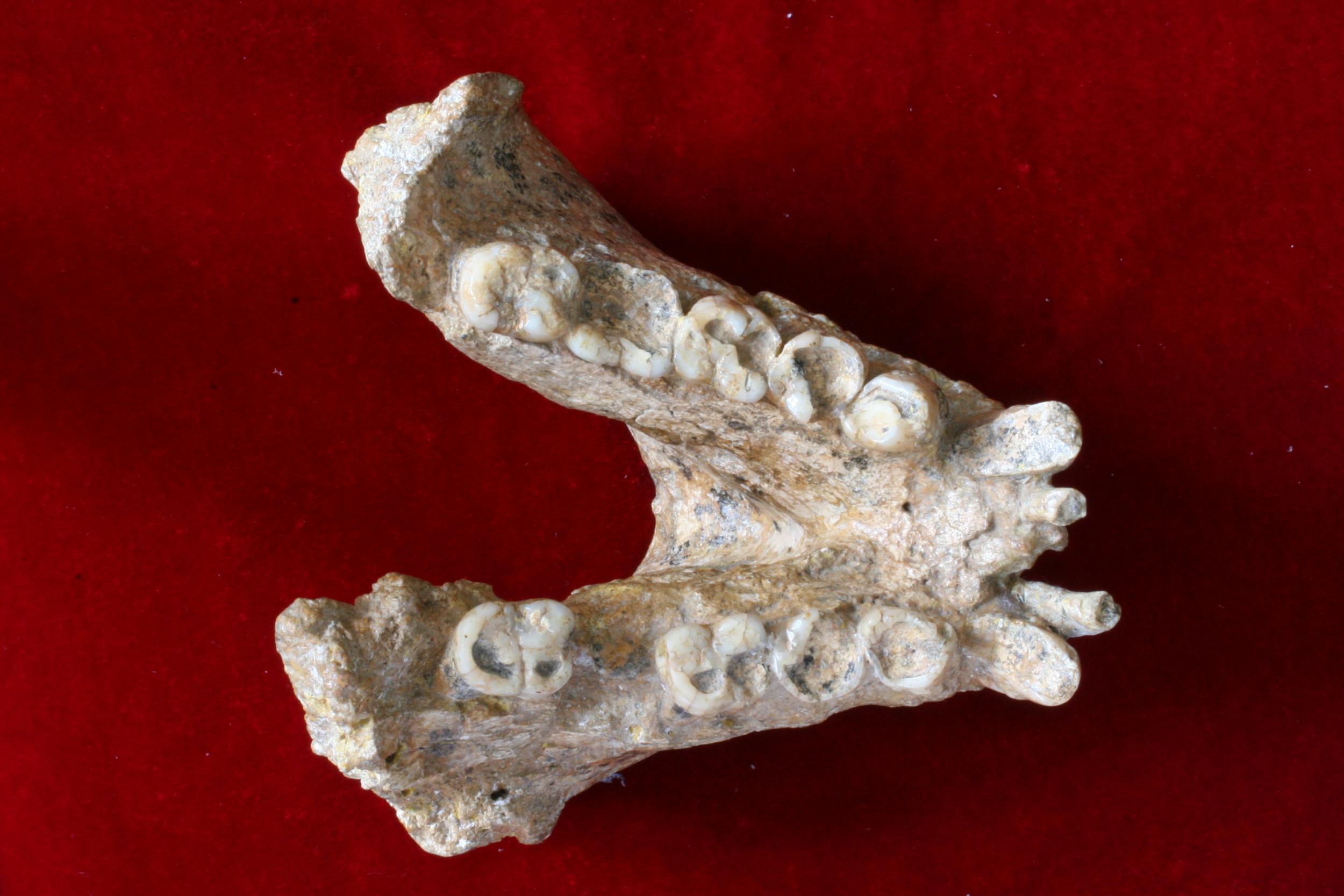The Independent's journalism is supported by our readers. When you purchase through links on our site, we may earn commission.
Breakthrough technique reveals ancient link between mysterious 2-million-year-old giant ape and modern orangutans
Ancient primate was three metres tall and weighed 600kg

Your support helps us to tell the story
From reproductive rights to climate change to Big Tech, The Independent is on the ground when the story is developing. Whether it's investigating the financials of Elon Musk's pro-Trump PAC or producing our latest documentary, 'The A Word', which shines a light on the American women fighting for reproductive rights, we know how important it is to parse out the facts from the messaging.
At such a critical moment in US history, we need reporters on the ground. Your donation allows us to keep sending journalists to speak to both sides of the story.
The Independent is trusted by Americans across the entire political spectrum. And unlike many other quality news outlets, we choose not to lock Americans out of our reporting and analysis with paywalls. We believe quality journalism should be available to everyone, paid for by those who can afford it.
Your support makes all the difference.A breakthrough genetic technique has revealed a link between an extinct two-million-year-old giant ape and modern orangutans.
Scientists discovered dental enamel, believed to be around 1.9 million years old, which belongs to an ancient primate that lived in southern China and would have been as much as three metres tall and weighed 600kg.
Researchers say the genetic materials of the Gigantopithecus blacki, which were retrieved from the molar fossil by breaking down their proteins, are “the oldest known skeletal proteins sequenced to date”.
Scientists discovered this mysterious ape diverged from modern orangutans between 10 and 12 million years ago.
The findings show the possibility of extending “the evolutionary relationships between modern humans and extinct ones further back in time, at least up to two million years”, according to the paper published in Nature.

The oldest human fossil remains with conserved DNA date back 400,000 years – leaving a void in evolutionary history.
Frido Welker, a postdoctoral researcher at the Globe Institute, University of Copenhagen, and first author of the study, told The Independent: “Although it probably was as a large great ape, the size of a gorilla or slightly larger, we know very little of the animal except for its teeth.
“Primates are relatively close to humans, evolutionary speaking. This means that we can potentially retrieve similar information on the evolutionary line leading to humans.”
The researchers used a technique known as mass spectrometry to sequence the dental enamel proteins of the Gigantopithecus.
The process involves breaking down proteins into peptides – which are short chains of amino acids – and analysing their masses to figure out their chemical composition.
This technique was also recently used to extract genetic information from a 1.7-million-year-old rhino tooth.
The method has been hailed as a “game changer” by scientists as it is able to acquire genetic information – especially from fossils excavated from subtropical regions – that were previously unobtainable using DNA testing.
Dr Welker said: “Until now, it has only been possible to retrieve genetic information from up to 10,000-year-old fossils in warm, humid areas.”
The fossil remains of the Gigantopithecus – comprising a few lower jaws and lots of teeth – were initially discovered in 1935 in Chuifeng Cave in southern China.
They were identified by palaeontologist Ralph von Koenigswald who found an isolated tooth in a Hong Kong drug store where it was being sold as a traditional remedy under the name “dragon teeth”. He identified a molar that was more than 2.5cm wide and proposed that it could have belonged to a huge primate.
However, due to lack of cranial remains, scientists were unable to reconstruct the physical appearance of this mysterious animal which lived in the forests in modern-day China, India and Vietnam.
Protein sequencing allowed the researchers to paint a picture of what the Gigantopithecus, which became extinct around 300,000 years ago, may have looked like.
More recent studies have also suggested that Gigantophitecus was a herbivore, judging from the wide and flat shape of the molars and analysis of fossils which revealed microscoptic plants found in its teeth.
This study is the first to fit this mystifying creature into the rest of the human lineage.
Enrico Cappellini, an associate professor at the Globe Institute and senior author on the study, said: “By sequencing proteins retrieved from dental enamel about two million years old, we showed it is possible to confidently reconstruct the evolutionary relationships of animal species that went extinct too far away in time for their DNA to survive till now.
“In this study, we can even conclude that the lineages of orangutan and Gigantopithecus split up about 12 million years ago.”
Join our commenting forum
Join thought-provoking conversations, follow other Independent readers and see their replies
Comments